Middle Fork Outfitters’ B Bar C Ranch: Year-round Remote Fly-in Ranch
Are you looking to really get away from it all? Take your friends to a remote, off-the-grid ranch most people have never heard of? Middle Fork Outfitters‘ B Bar C (a.k.a. B–C) Ranch is open year-round for fly-in breakfast, bed and breakfast, trail rides, and more. You can fish or hike the pristine mountain wilderness of central Idaho and not have to rough it in a tent. For a real wilderness adventure, you can take a multi-day guided wilderness trip on horseback to hunt or photograph elk, deer, bear, or mountain lion. The well-maintained, private mountain airstrip can be a gateway to fishing or horseback riding with your kids, a romantic interlude for two, or mountain and creek-side hiking. A cozy lodge with private rooms and home-cooked meals are waiting for you, and Middle Fork Outfitters would love to help you plan your perfect backcountry fly-in vacation.
Incredible Hiking and Fishing
June is often the rainiest season; subsequently, mosquitoes tend to be numerous at night from mid-July through August, so mosquito repellent is a good idea. However, mosquitoes never once bothered us during any of our daylight activities. By September, nighttime temperatures can dip near freezing, though the days stay warm through October.
Although Middle Fork Outfitters specialize in fall hunting, summer is an excellent time to visit. You can hang around the ranch and relax, read, or play with a friendly pooch. Ron gave my husband impromptu lessons in knife-throwing, using the propped-up wooden disc of a huge tree trunk as a target. The area offers almost unlimited hiking opportunities, both in and out of the Frank Church Wilderness area. The ranch sits at the mouth of Ram’s Creek, which runs into Silver Creek (that’s the drainage you flew up to land here). You can wander up past the lake created by an earthen dam across Silver Creek. Bright blue damselflies and multi-colored butterflies dart and flutter along the water’s edge, while songbirds serenade you overhead. Keep an eye out for dippers, brave little sparrow-like birds that walk along the rocks underwater, searching for insect larvae. There’s a large meadow full of ground squirrels that pop out of their dens as you pass, chirping warnings to their relatives. In the other direction, you can walk past the runway and downstream three miles to Camas Creek, or ask Karla for a ride there and walk back.
 Camas Creek is loaded with 17-inch cutthroat trout and 20-inch bulls for catch-and-release fishing. You can keep fish you catch in Silver Creek or the lake, which is perfect for beginners, with brook trout and rainbow and cutthroat trout (limit 2–10 per day). Enjoy all this local fishing on your own, or take a five-day guided fishing trip into the mountains or to the Middle Fork of the Salmon River, customized just for you. Your guides can show you five high-country lakes with grayling, brook, and cutthroat trout, and over 20 miles of pristine trout streams. You’ll ride up to the top of a ridge with hundred-mile views all around and then descend into the peaceful, quiet wilderness. Camp life here is relaxing and comfortable, and the food is prepared with Dutch-ovens and barbeques. Hunting guides and camp cooks come to Middle Fork Outfitters’ Guide School from across the country, so you’re traveling with the best here.
Camas Creek is loaded with 17-inch cutthroat trout and 20-inch bulls for catch-and-release fishing. You can keep fish you catch in Silver Creek or the lake, which is perfect for beginners, with brook trout and rainbow and cutthroat trout (limit 2–10 per day). Enjoy all this local fishing on your own, or take a five-day guided fishing trip into the mountains or to the Middle Fork of the Salmon River, customized just for you. Your guides can show you five high-country lakes with grayling, brook, and cutthroat trout, and over 20 miles of pristine trout streams. You’ll ride up to the top of a ridge with hundred-mile views all around and then descend into the peaceful, quiet wilderness. Camp life here is relaxing and comfortable, and the food is prepared with Dutch-ovens and barbeques. Hunting guides and camp cooks come to Middle Fork Outfitters’ Guide School from across the country, so you’re traveling with the best here.
The Middle Fork trip begins with a 13-mile ride down Camas Creek and then four miles up the Middle Fork, where you’ll fish along seven miles of that famous river, staying in the 100-year-old Tappan Cabin or comfortable wall tents at the mouth of Grouse Creek. Along the way, your guides will show you Sheepeater Indian pictographs and hunting pits the Shoshone used to trap sheep and deer. Grouse Lake boasts a generous supply of pan-sized Brookies. Guided fishing day trips by horse from the lodge are $325–$375 per day 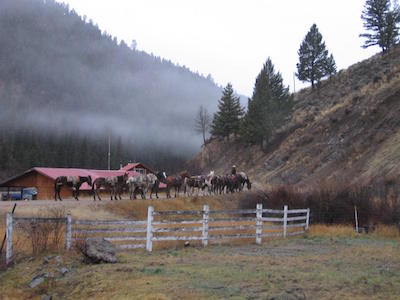 including meals and lodging; five-day trips $1,000–$3,000; pickup and drop-off only with horses and guide to remote sections of Camas Creek $350–$500.
including meals and lodging; five-day trips $1,000–$3,000; pickup and drop-off only with horses and guide to remote sections of Camas Creek $350–$500.
If you’d rather not fish, you can still take a trail ride to the Indian caves. They’ll trailer the stock down to Camas Creek, saving several hours of riding. Worried about horseback riding? My husband’s not a big fan, having met a few ill-tempered beasts in the past. “No need to worry”, drawls Ron, “Our horses are dead broke, so even those who’ve never ridden before do just fine,” $75 per half-day, $100–$125 full day, kids should be 12 or over.
Flying There
Although the runway is most often used in summer and fall, the ranch owner is a pilot and the caretakers keep the runway plowed all winter; skis are not required. Other than emergencies, however, you should contact Middle Fork Outfitters ahead of time to secure permission for landing on their private strip, 509-671-7126, or better yet via email MiddleForkOutfitters@live.com. They will email a waiver to be signed prior to landing. You can also download the waiver online and then scan it and email it back to them.
The runway was in excellent shape during our July visit, but may be mushy in spring. It’s a good idea to contact them for a final condition check before your departure.
Middle Fork Outfitters’ B Bar C Ranch would normally be depicted on the Great Falls Sectional Chart, but you won’t find it there. Instead, order a special Idaho VFR Chart, created by Galen Hanselman at the behest of the Idaho Division of Aeronautics. It shows the entire state and nearly all of Idaho’s backcountry airstrips, including many that are not shown on official FAA VFR Sectionals, $10 at the Idaho Aviation Association online store.
In addition, virtually all Idaho backcountry pilots carry Hanselman’s “Fly Idaho!” in their cockpits. This book supplies vital information on all the major airstrips in the state. Runway lengths, elevations, approach and departure information, photos, and surrounding terrain and runway elevation diagrams help the pilot decide whether to attempt flying into any particular airstrip, as well as how to operate safely. The book also provides information on ground-based activities, campsites, area history, and fun local anecdotes. The all-new, 946-page two-volume Third Edition just came out in May 2015, and is also available at the IAA online store, and through the Fly Idaho website.
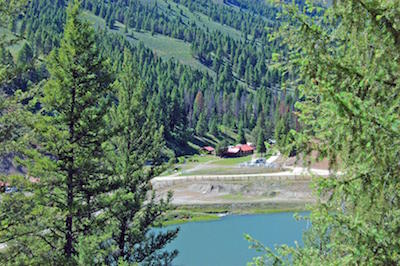 The B Bar C Ranch lies deep within the Salmon Mountains in east-central Idaho. Flying here when it’s windy means lots of bumps on top and tricky air currents down in the canyons, so fly early when winds are calmer, the air is cooler, and the density altitude is lower. From the Salmon VOR, you can fly 14 nm on the 225-degree radial, which will take you into the Silver Creek drainage. Follow this about another 5 nm southwest, and you should overfly a small lake followed by B Bar C’s Runway 21. Check for elk on the runway, especially in fall.
The B Bar C Ranch lies deep within the Salmon Mountains in east-central Idaho. Flying here when it’s windy means lots of bumps on top and tricky air currents down in the canyons, so fly early when winds are calmer, the air is cooler, and the density altitude is lower. From the Salmon VOR, you can fly 14 nm on the 225-degree radial, which will take you into the Silver Creek drainage. Follow this about another 5 nm southwest, and you should overfly a small lake followed by B Bar C’s Runway 21. Check for elk on the runway, especially in fall.
Continue past the airstrip, giving yourself enough space to descend and turn back when safe. It’s 3 nm to Camas Creek, where it’s easy to turn around. Most local pilots follow the Middle Fork of the Salmon River, either from the north or south, turning east up Camas Creek to the Silver Creek drainage. Others, including me, prefer to stay mostly above the mountains at about 9,500 feet MSL with the destination coordinates plugged into the GPS. Upon arrival over the strip, it’s easier to see all the terrain, memorize the lay of the land, and descend over Camas Creek for the 3-nm final up Silver Creek. You should memorize the area because most of the approach is blind in the twisting canyon; by the time you see the runway you should be at your final airspeed and configuration, and about 100 feet AGL.
Runway 3/21 is 1,689 x 45 feet of turf/dirt. The approach end of Runway 3 is at 5,407 feet MSL, rising to 5,441 feet at the northeast end. Due to the two-percent uphill slope, landings are recommended on Runway 3. Afternoon winds tend to be southwesterly, so you may have a tailwind if you try to land in the afternoon—another reason to arrive in the morning. There’s a six-foot barbed-wire fence behind willows just prior to the threshold, so don’t drag it in. After landing, continue past the horse corral and barn. There are tiedowns in front of the fence and on the other side of the open area. Landing Runway 21 is not recommended except for experienced mountain pilots in light Super-Cub-type aircraft. If you do approach from that direction, the elevation drops away just past the dammed reservoir on short final to the threshold right next to buildings and corrals, not to mention the 2% downhill slope. Takeoffs are recommended southwest on Runway 21 due to rising terrain in a narrow, curving canyon to the northeast. When you take off on Runway 21, you’ll be heading downstream toward lower terrain.
B Bar C has no fuel or services; the nearest fuel is at Challis (LLJ), 23 nm southeast, self-serve available 24/7. Pete Nelson of Middle Fork Aviation offers specialized backcountry flight instruction, 208-879-5728, www.MiddleForkAir.com. Lemhi County Airport (SMN), 29 nm northwest in Salmon, has three instrument approach procedures in addition to fuel, 208-756-6211, www.MccallAviation.com/fbo_salmon.htm. Middle Fork Outfitters will pick you up from Challis or Lemhi if you have a hunt scheduled and can’t fly into their airstrip.
History
In the early 1900s, miner and rancher Max Schuler built a cabin near Ram’s Creek. Later, outfitter Andy Anderson started one of the area’s first guiding businesses from what was then the Bar X Ranch. He led hunters, floated Army surplus rafts down the Middle Fork to the Main Salmon River, and completed additional construction. The ranch is now known as the B Bar C.
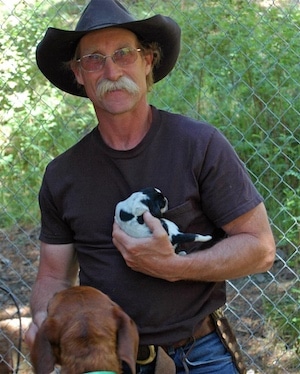 Middle Fork Outfitters B Bar C Ranch takes its name from the last-name initials of its former owner-partners, Bogaman, and Caufield. Coincidentally, these letters are also the first initials of the husband and wife who currently own the ranch, so the name remains. Nowadays caretakers Ron and Karla Ens of Middle Fork Outfitters are both supremely capable of handling the ranch and living in this remote location surrounded by the 2.3-million-acre Frank Church River of No Return Wilderness. Truly off the grid, the ranch gets electricity via solar cells, with a propane generator for backup. Behind his friendly demeanor, Ron is a modern-day mountain man, lean as a whip and tougher than nails. Ten months of the year, he’s out on six- to 10-day wilderness treks up to 10,000 feet, spending just three days at home before heading out again with another hunting party. He’s even got a real “cowboy” accent; close your eyes when he speaks and you’ll swear you just dropped yourself into the Wild West of the 1880s. Both Ron and Karla know their way around airplanes, having spent many hours in small aircraft, and they know the local weather patterns.
Middle Fork Outfitters B Bar C Ranch takes its name from the last-name initials of its former owner-partners, Bogaman, and Caufield. Coincidentally, these letters are also the first initials of the husband and wife who currently own the ranch, so the name remains. Nowadays caretakers Ron and Karla Ens of Middle Fork Outfitters are both supremely capable of handling the ranch and living in this remote location surrounded by the 2.3-million-acre Frank Church River of No Return Wilderness. Truly off the grid, the ranch gets electricity via solar cells, with a propane generator for backup. Behind his friendly demeanor, Ron is a modern-day mountain man, lean as a whip and tougher than nails. Ten months of the year, he’s out on six- to 10-day wilderness treks up to 10,000 feet, spending just three days at home before heading out again with another hunting party. He’s even got a real “cowboy” accent; close your eyes when he speaks and you’ll swear you just dropped yourself into the Wild West of the 1880s. Both Ron and Karla know their way around airplanes, having spent many hours in small aircraft, and they know the local weather patterns.
Hunting and the Wildlife
Prime wildlife habitat surrounds the B Bar C Ranch. In addition to falcons, hawks, and owls, you might spy golden eagles in summer or bald eagles in winter. Bull elk shed their antlers in spring; some people collect them as home décor. To see remote wildlife, non-hunters are welcome on scheduled hunts, $200 per day.
You learn to see nature in a different way when you travel with a hunting guide. It’s not just for the scenery; you begin to look at plant life as cover, and start wondering what might be hiding behind those bushes or rocks. Your senses sharpen; you listen and learn to be quiet. Middle Fork Outfitters is first and foremost a guided hunting operation. A good way to get an idea of what may transpire on one of their expeditions is to read Ron’s journals, which he calls the Middle Fork Chronicles; you’ll find them on the website’s home page. Their permitted areas comprise some 260 square miles of the Challis National Forest. Success rates average 70% for elk and 80% for deer. Ron says the number-one  factor in determining success is the fitness of the clients. Elk Camp is 20 miles away and it can be strenuous. Camps are luxurious, with warm tents, showers, and good food. All hunts are fair chase, meaning animals are not fenced in any way.
factor in determining success is the fitness of the clients. Elk Camp is 20 miles away and it can be strenuous. Camps are luxurious, with warm tents, showers, and good food. All hunts are fair chase, meaning animals are not fenced in any way.
After a six-day black bear hunt the first week of September, elk and deer season begins as the bull elk are bugling and gathering their females for the rut. Horses are used to access remote areas, but most hunting is done on foot. December brings deer and elk archery season, during which you sleep at the ranch. Bear are hunted during fall or spring over baits, using spot and stalk, or with hounds, which are also used for winter mountain lion hunting. Bighorn sheep and mountain goat hunting are tightly controlled by permit. Ron usually takes only one hunter per year on average for these animals, as the tags are difficult to obtain. Middle Fork Outfitters will take care of the licensing for you. Parties can have from one to six hunters, with one, two, or three hunters per guide, $1,800–$10,500. You can also “hunt” with a camera for the same rate, minus license and permit fees, 509-671-7126.
Where to Stay
An old paddle wheel stands outside the lodge entrance. Step up to the porch and you’ll likely see Scratch or one of the other hounds flopped in a chair. Open the door and step into the trophy room, which stays refreshingly cool all summer and warm all winter. There’s a large river-rock fireplace to your right, and a collection of comfortable recliners perfect for curling up with a good book. Take your pick of interesting volumes on mountain men, pioneer women, or local wildlife, not to mention stacks of hunting magazines. There’s some cowboy art as well. An antique bellows serves as a coffee table, and the hounds have their favorite cushions over in the corner. The trophies and skins inside include elk, deer, bear, bobcat, bighorn sheep, badger, and mountain lion. Sitting in a recliner, I peered at the animal skin covering the couch. Grizzly? No, not furry enough. Moose? No, wrong color. “What is that?” I queried Karla. “Oh, that’s Chester, our old mule. When he finally died, we missed him so much we decided to keep him around by putting his hide on the couch!”
Middle Fork Outfitters’ lodge sleeps up to eight people and has six guestrooms with different-sized beds, each uniquely decorated by Karla in Western themes. The rooms share one bathroom with shower at the end of the hall. There’s an enormous kitchen with a refrigerator if you’ve brought some of your own food and a separate dining room; rooms $150 per person single, $250 double includes three meals; rooms with meals and guided trail ride, $325–$375.
Up a hill, overlooking the lake and ranch, two log summer cabins sit side-by-side. Each has two bunk beds, but you’ll need to bring your own sleeping bags or bedding and do your own cooking, $100–$150 per day (five-day minimum), horse and guides $175.
Where to Eat
Middle Fork Outfitters B Bar C Ranch is open for breakfast seven days a week. They serve traditional breakfasts made from scratch. Their specialties are biscuits and pancakes but they make a variety of filling breakfasts. They can accommodate just a few or a big crowd, but they prefer 48 hours’ notice so they can provide you with an “efficient and unforgettable” breakfast, $20.
We visited during July when both guide and cooking school sessions take place, so we ate all our meals with Ron, Karla, and the crew in the dining tent, sampling various dishes Karla had taught her students how to prepare. This was delightful, except for the mosquitoes that showed up for dinner as well. Now guest meals are served inside the lodge—problem solved.
Breakfast was served early (around 6:30 a.m.), as the students had a long day ahead of them. Choices included hot cereal, pancakes, meat, and eggs, or a terrific, slightly spicy Breakfast Burrito Supreme filled with lean meat, beans, rice, corn, and onions. Breakfast is served year round for Bed and Breakfast guests and for those flying-in to partake on a trail ride; $20, daily 7:30–10:30 a.m. Our first lunch consisted of simple sandwiches, as the students were up on the mountain. The second day’s lunch was a hearty chicken pot pie, accompanied by salad and iced tea. Dinners can vary from roast beef or pork chops to spaghetti with beef and bear meat. One evening we tried two excellent meatloaf recipes, each made with bear meat. Salad and biscuits rounded out the meal, followed by an awesome chocolate dessert prepared in the Dutch oven. It was sort of a brownie/lava cake with cherries. After dinner, everyone socialized outside the tent. After the women ambled off to read, rest or attend to chores, the men passed a flask of whiskey and told possibly tall tales for another hour before eventually heading to bed. The camp was still but for a lone owl, hooting his greeting from some far-off tree.
The surrounding mountains have many more deer and elk than they did 100 years ago. Whether you’re a hunter or just want to see and photograph them in this magnificent country, Middle Fork Outfitters has some of the most experienced and successful guides anywhere. But diverse wildlife is just one of the attractions of the Frank Church River of No Return Wilderness and the B Bar C Ranch. Now that it is open for visitors with reservations, you can be among the first summer guests to fly in here.
Simplot Ranch/Loon Creek
Expert pilots, and I do mean expert, can fly in for breakfast ($20) to what Ron and Karla call the Simplot Ranch or Loon Creek. This airstrip is usually referred to as the Lower Loon Creek strip, at the confluence of the Middle Fork of the Salmon River and Loon Creek. They have five guest cabins, hot showers, trail rides, hunting, fishing, wildlife viewing, and a natural hot tub nearby. See Fly Idaho! for more info and photos. It’s only 1,200 feet long, and that’s being generous. The normal approach is to fly upstream on the Middle Fork and then make a sharp left turn (that gives new meaning to “short final”) and land uphill on Runway 16. Normally you’ll depart on Runway 34 and make a right turnout downstream over the Middle Fork. The runway isn’t well-defined and you should watch for sinking air as you cross the water. Two windsocks are east of the runway, and you can park at midfield on the west side or at the upper end. It’s strongly advisable to fly here first with an instructor or someone very familiar with this airstrip.
From May–August, Middle Fork Outfitters’ B Bar C Ranch is open for fly-in breakfasts with no reservations needed. From September–April, they are open for bed and breakfast by reservation only. After breakfast, you can hike a mile to a hot spring for a nice soak. On the other hand, if it’s going to be a hot day, remember density altitude. It might be better to head back home!






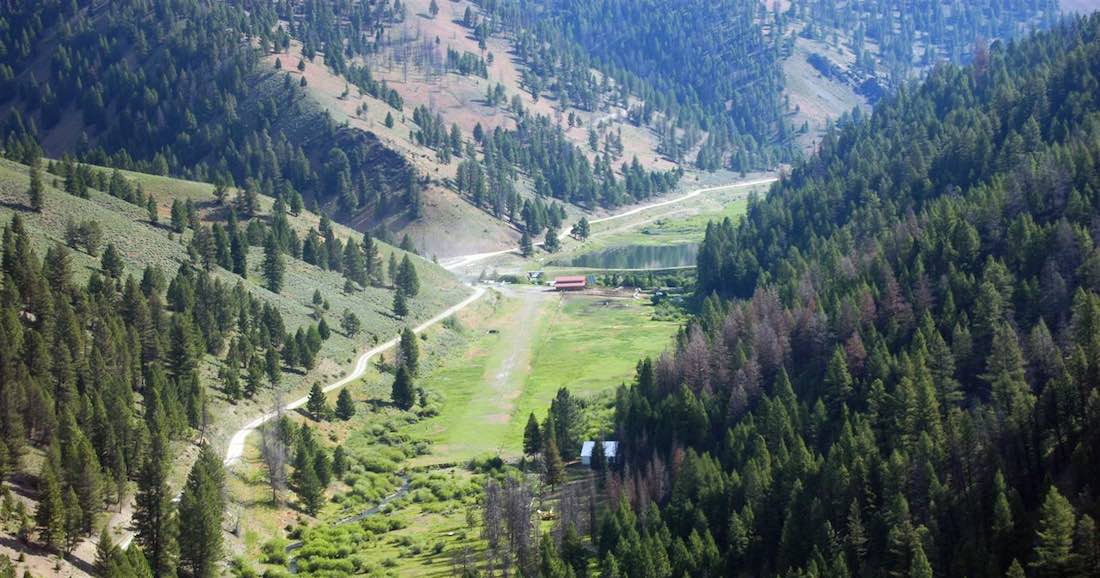

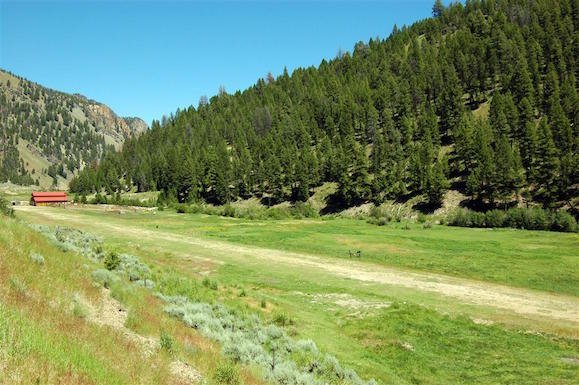
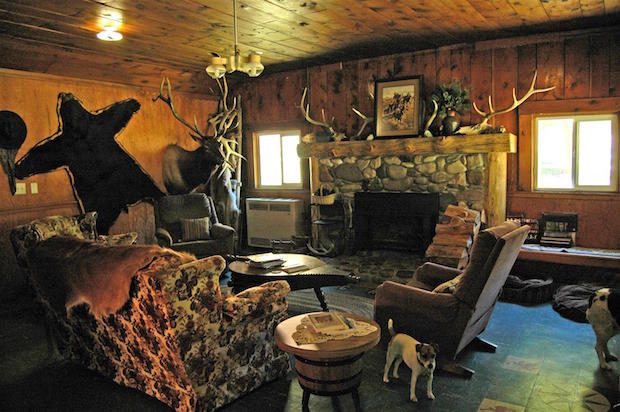
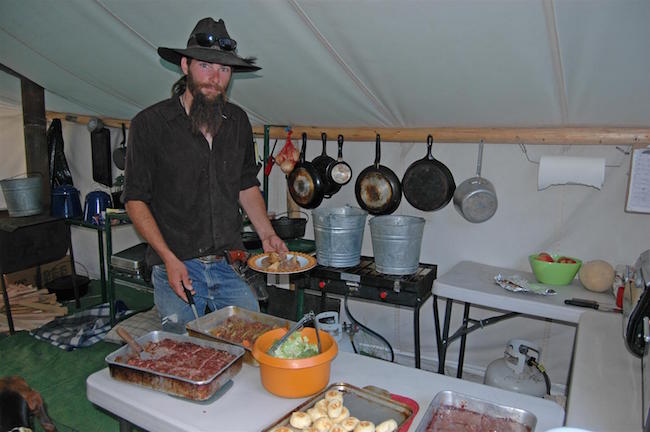



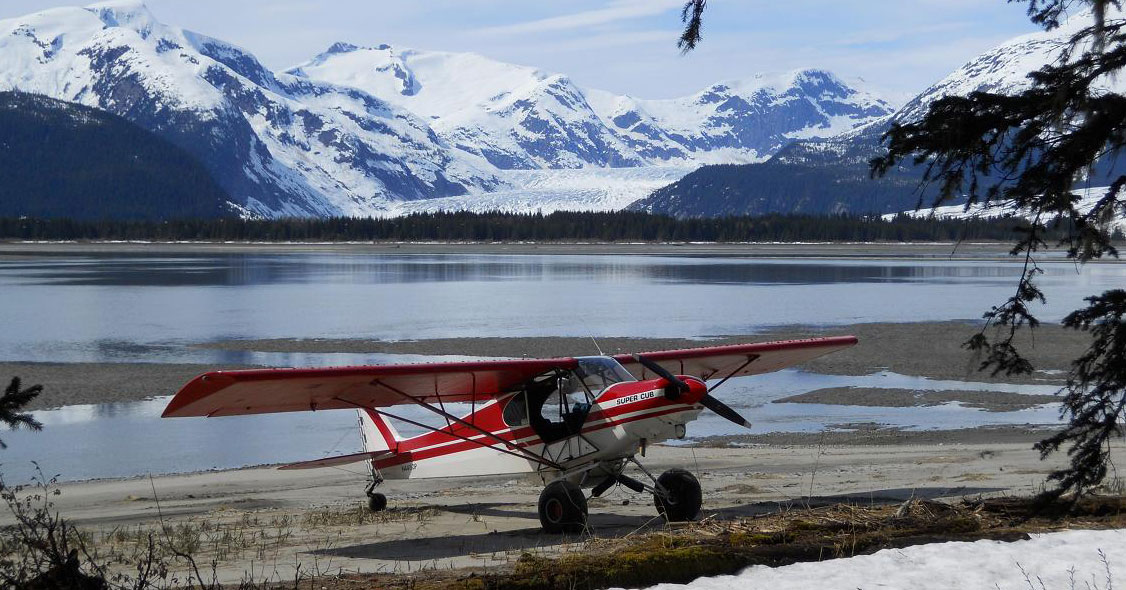
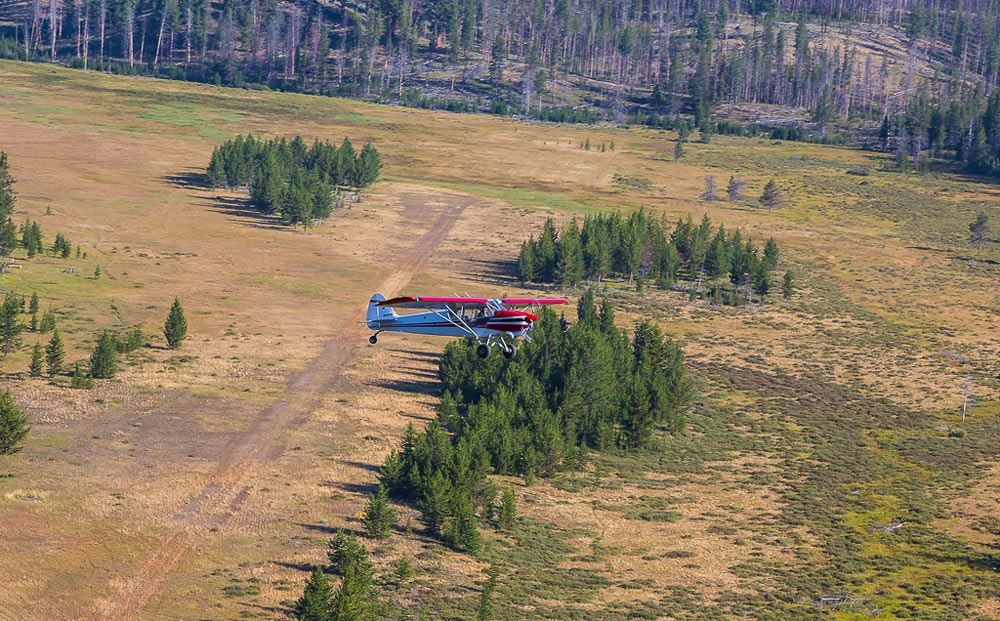
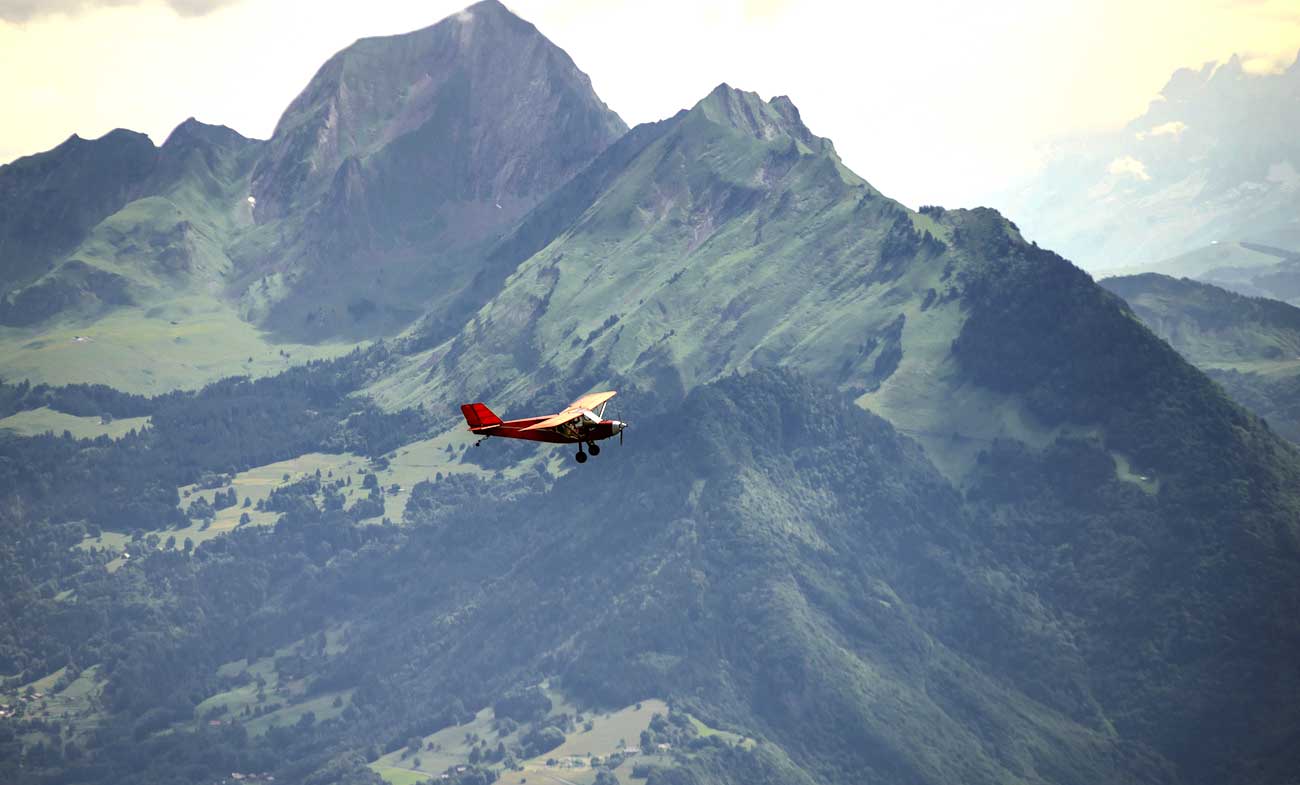
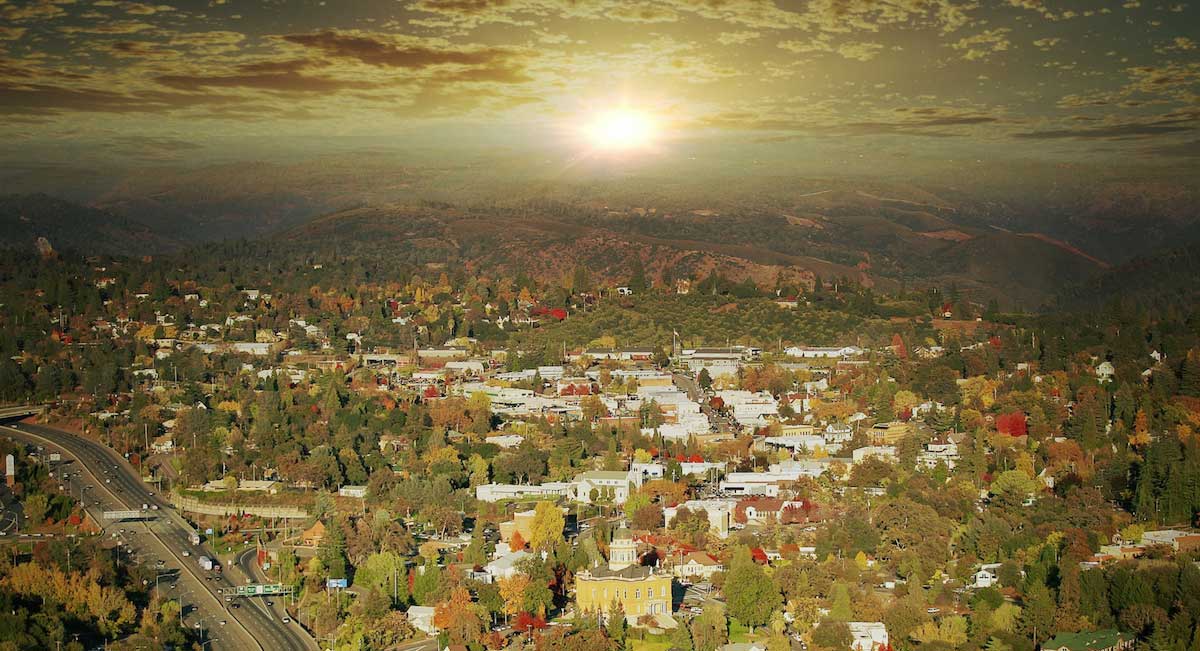
Well written piece